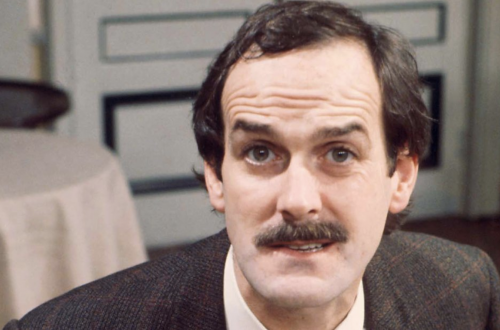This is a guest by Iram Ramzan
Heard the one about the three-year-old jihadi? No seriously, have you? The Daily Mail and various other newspapers ran a story last month about a toddler from Tower Hamlets who is apparently among thousands of Londoners identified as “at risk” of radicalisation by police.
According to a report by the National Police Chiefs Council (NPCC), 834 under-18s children were referred to Channel, the government’s counter-radicalisation authority, at a rate of one per day between April 2012 and June 2014. Around 10 per cent of the children were under age 12.
Don’t worry – tots are not turning into terrorists. The toddler in question was clearly not an extremist, but part of a family that was at risk, and hence needed to be safeguarded. Very few will understand that just by glancing at the headlines.
For several months now, various organisations and commentators have been inflaming the fears and paranoia about the government’s counter-terrorism strategy (CONTEST), ever since wide-ranging powers were brought in under the Counter-Terrorism and Security Act, meaning that teachers, social workers, prison officers and NHS managers will need to report signs of radicalisation.
There are four strands to CONTEST:
Pursue – to stop terrorist attacks;
Prevent – to stop people becoming terrorists or supporting terrorism;
Protect – to strengthen our protection against a terrorist attack;
Prepare – to mitigate the impact of a terrorist attack.
Of these four, Prevent is the most controversial one which has dominated the majority of the headlines, including a letter that was sent to the Independent newspaper last month.
“Prevent will have a chilling effect on open debate, free speech and political dissent”, it said, quoting a point made in the letter, which was signed by 280 academics and public figures.
Either this letter was a knee-jerk reaction with most of the signatories not having read the full letter, or they are willingly complicit in pushing the narratives of extremists. Or both. One of the academics claims the letter was penned by the advocacy group Cage, whose research director, Asim Qureshi, came under fire earlier this year for describing Mohammed Emwazi, or ‘Jihadi John’, as a “beautiful young man”. Cage has a record of defending convicted terrorists, even inviting hate preacher Abu Qatada to speak via a video link at their recent Ramadan dinner. The group was identified in Prime Minister David Cameron’s speech on extremism last month as being part of the problem.
One of the signatories is the extremist scholar Haitham al Haddad, who believes in killing those who renounce Islam, that Jews are the “descendants of apes and pigs”, and homosexuality is a “crime against humanity”.
Another signatory, Azad Ali, was suspended as a civil servant in the Treasury in 2009 after he praised Osama bin Laden’s key mentor. He has called Hamas “a true resistance movement”, and suggested that the killing of American and British troops in Iraq would be justified.
The aforementioned people will naturally be staunch critics of Prevent because the strategy is aimed at, well, preventing the influence of such people. If the likes of Haddad and Qureshi are against Prevent then that tells you which side you should be on.
Of course, there were some initial problems with Prevent when it was first introduced after the July 7 bombings 10 years ago, the main one being that it ended up becoming a cash cow for “airy fairy” community cohesion projects, sometimes with extremists being on the government payroll. One such person was Asim Hafeez, who has strong links to hardcore Salafi groups. In 2009 Hafeez spoke at a controversial International Conference in India. Other speakers at the conference included Zakir Naik, Bilal Philips and Hussain Yee, all of whom are banned from entering the UK for their extreme views.
They signatories of the letter – and other Prevent critics – go on to argue that it is not ideology but socio-economic factors that turn young Muslims into extremists. If ideology plays no role then how does that explain the increasing number of white converts who are going off to fight jihad?
The 7/7 bombers and the likes of medical student Nasser Muthana – who fled Cardiff to join ISIS – were most certainly not deprived. In fact, they lived affluent middle class lifestyles, taking advantage of all the freedoms and benefits of living in Great Britain. Denying the role of ideology is absurd.
The signatories believe the government’s strategy will lead to Muslims feeling criminalised simply for growing a beard or wearing a hijab. Owen Jones wrote in the Guardian that the policy will “seal the mouths of Muslim pupils”. Giles Fraser, also in the Guardian, suggested recently that “signs like going to the prayer room too much, or wearing modest clothing” could somehow lead the individual to be reported for being an extremist.
At best, such simplistic claims are inaccurate; at worst they are inflammatory and stoking fears. The majority of those who are critical of Prevent have little knowledge of the strategy; sensationalist headlines about “spying on toddlers” do nothing to alleviate the paranoia.
In fact, the Prevent strategy even states that converting to Islam or growing a beard is not necessarily a cause for concern. Far from stifling speech, debating difficult and challenging topics is mandatory under Prevent.
Everyone I have spoken to who has worked in this field insists that there is very little opposition to the Prevent strategy. One such person is Kalsoom Bashir, now the co-director of the counter-extremist group Inspire, who was the lead Prevent officer for Bristol City Council from 2008-2012. She was then seconded to the South west counter terrorism unit as the regional prevent trainer, delivering prevent training to staff in the NHS, police, local authority and schools as well as members of local communities.
“In the early days of Prevent the government was looking at promoting cohesion projects but Prevent really shouldn’t be about that,” said Kalsoom.
She explained that far from spying on Muslims – she also happens to be a practising Muslim as do many other Prevent trainers – the strategy is about bringing together all resources and agencies for safeguarding young people.
“Now Prevent sits in the right place,” she went on to say. “How we prevent or raise awareness, how we prevent people or persuade them from not going down the path of extremism, not cohesion projects. The local authority should still be promoting strong cohesion projects but not under the lens of counterterrorism.
“Sometimes I think academics don’t have a clue what’s happening in grass-roots communities. The anti-Western, anti-Kuffar (non Muslims) rhetoric is out there. I‘ve had people say to me, you’re too close to the kuffar. That rhetoric is becoming so widespread. Groups like Cage are abusing the laws we have for free speech to support their own ideology.
“They spread hysteria and fear by conflating Pursue, a completely different strand of the counter terrorism police with Prevent. Pursue is what happens when the law is broken and police need to disrupt terrorist activity. Prevent is protecting people from going down the path of criminality.”
As for the many teachers who are supposedly frightened what impact this could have on their students? “The overwhelming feedback from teachers, once they’ve heard what Prevent is and it really challenges myths and misconceptions, is positive, and they’re confident after they’ve had the training,” Kalsoom continued. “They ask us to come back for follow up training. The chances of teachers ever having to report students are really low, but they need to be aware of any worrying signs.”
Kalsoom gave the example of Isa Ibrahim, a 20-year-old man who, in 2009, was found guilty of plotting to carry out a suicide bombing at a shopping centre in Bristol. There were so many worrying signs – asking his biology teacher about weapons and showing his drugs worker disturbing footage on his phone – but because he hadn’t broken any laws, nothing was done to stop him from going down the criminal path.
“If all these people had shared their concerns with with Channel for example, they would have the bigger picture,” she added. “They could have sent him a mentor. He had mental health and drug issues, so mental health services could have got involved. he needed sound faith advice and a strong mentor. This is what Channel does. It is a group of experts and practitioners that have the well being of the individual at heart.”
The Times ran a story last week about a 14-year-old IS supporter who pleaded guilty to plotting to behead an Australiam police officer. The teenager had been referred to the Channel de-radicalisation programme after expressing desires to become a martyr.
Court papers revealed that the boy’s uncle had been aggressive when an officer from the programme approached the house for an appointment, and refused to allow him in.
This case demonstrates that Channel is a voluntary process and nobody can be forced to engage against their will. Far from highlighting the failure of Channel, what it does show, sadly, is the failure of the family to safeguard their own child.
Student Rights, a group that monitors extremism on campus, published a detailed report ‘Preventing Prevent? Challenges to Counter-Radicalisation Policy On Campus‘ which found that since the 7/7 attacks, student unions and organisations have actively sought to hinder the Prevent strategy.
A motion passed at the National Union of Students Conference in April this year pledged to oppose Prevent delivery on campus because it is “attempting to monitor and control Muslim students”.
In June 2013, the report goes on to say, the Federation of Islamic Societies (FOSIS) annual conference hosted a “Preventing Prevent” event, where words such as “McCarthyism” were thrown around. Ibrahim Ali, who was the vice president of student affairs at FOSIS in March this year, gave a speech at a Cage event in which he declared that “Prevent itself is a racist agenda; it’s an Islamophobic agenda”.
The perception is that Prevent is somehow anti Muslim, despite the fact that around 10% of referrals to Channel were in relation to far-right extremism. The report also highlights that of the 2,297 arrests on suspicion of terrorism offences between September 2001 and August 2012, 1,066 were listed as “Muslim” and 1,231 were listed as other or no religion, or unknown religion.
“Even when Prevent highlights other forms of extremism, CAGE dismiss it because it doesn’t support their argument,” said SR director Rupert Sutton.
“They portray it as an attack on communities. The big push for them is normalising their beliefs to say, when you attack us, what you’re doing is attacking Muslim communities in the UK. Extremists are trying to make their views mainstream.”
The Prevent strategy might not be perfect – which strategy is? – but it is the best we have at the moment. It does not help that there are people who are actively undermining it and helping the extremist agenda either willingly or out of fear that they might fuel anti-Muslim bigotry.
There are many people now speaking out against extremism and ISIS, keen on doing workshops and media interviews as often as they can. Perhaps I am being cynical, but it would not surprise me if they are doing this to merely to get funding
In order to ensure it is effective, the government firstly needs to defend its policy more robustly and dispel any misconceptions. This would explain why the Northamptonshire Police Prevent officers have become active on Twitter. The people who run the account should be commended for hitting back at absurd claims about Prevent in a calm and rational manner which invites people to engage with them, rather than turning them away. They even appeared on Radio 4 to give an insight into the work they do.
Finally, the government must also ensure that the right people are given money to deliver Prevent training rather than allowing non violent extremists to slip through the net as they did in the past, who did nothing to counter the poisonous ideology turning our young people into extremists going abroad to join a death cult.


